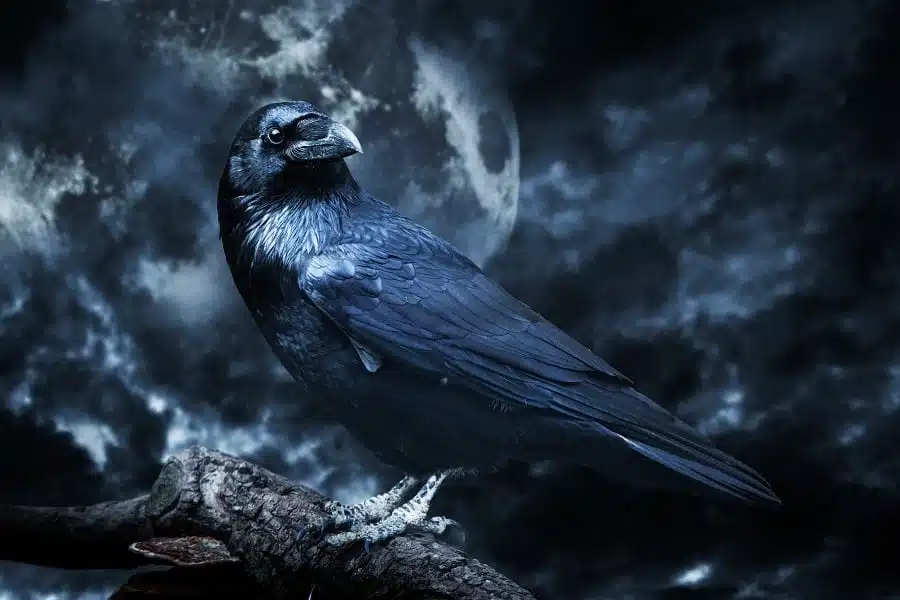Here’s the difference between personification and pathetic fallacy:
The key difference between personification and pathetic fallacy is the scale.
Personalization can refer to any instance in literature where a nonhuman displays human characteristics.
The pathetic fallacy involves attributing emotional reactions to something inanimate.
If you want to know all about the differences between personification and pathetic fallacy, then you’re in the right place.
Let’s get started!

What Is the Difference Between Personification and Pathetic Fallacy?

| Personification | Pathetic Fallacy | |
| Definition | A figure of speech that projects any human qualities or features to non-human objects | A specific type of personification that gives human emotions to non-human objects |
| How it’s used | Used to create a more vivid illustration of a poem or story, therefore creating a more profound connection with the reader | Always used to give emotions to inanimate objects – typically elements of nature or the environment |
| Scope | More general in scope as it involves any human-like quality or feature | It’s more specific as it only involves human emotions |
| Nature | Can be any human feature, quality, or action that only humans can do | Always involves a human emotion |
| Specificity | A creative tool that helps better describe or explain ideas and concepts; thus, “breathing life” to an otherwise dull story | A useful literary tool that helps set the tone or mood of a scene to create a more powerful picture of a character’s emotional state |
Personification and pathetic fallacy both involve giving human-like qualities to something nonhuman, like an object or an abstract concept.
The main difference is the scale of the two terms.
Pathetic fallacy is the more specific of the two and involves attributing emotional reactions of some kind to an inanimate object.
Personification is the broader of the two terms and can refer to any instance of the nonhuman in literature exhibiting human qualities.
As such, every instance of pathetic fallacy is also an example of personification, while not every instance of personification is an example of pathetic fallacy.
What Is Personification?

Personification is the more commonly used term, partially due to applying to a wider number of situations, which simply makes it a more convenient term to use.
Personification is often used in creative writing, and especially poetry, to create imagery and concepts unique to that work.
It can also be used to make abstract concepts feel more tangible and thus more relatable.
One very common example of personification is the idea that Death is a robed figure rather than an unknowable event.
By giving Death a physical form, we reduce the uncertainty of the concept, thus making it easier for a human brain to comprehend.
From there, we could alter the way Death is perceived in that particular work by changing the figure’s personality.
Perhaps he has a bold sense of humor and a contagious laugh as he courteously guides you through the first few steps of the afterlife.
Or maybe your incarnation of Death is cold and dead, gliding lifelessly about and moving from space to space with surgical precision.
The imagery you assign to an abstract concept can completely change the meaning of the events in your work.
In the first instance, Death is portrayed as a character you might celebrate and welcome with open arms.
In the second, the character is to be feared and avoided. This allows the image to give some insight into how the characters will treat the event of death.
There are various other figures representing abstract concepts such as Mother Nature, Father Time, Lady Luck, Old Man Winter, etc.
By giving these immutable parts of our world a human face and personality, we make them more tangible so that we can include them in our stories.
Personified animals are another common event in literature.

Children’s books frequently take this a step further by anthropomorphizing the animals into more easily relatable human shapes.
This often allows children’s literature to address adult topics without dealing with every complicated nuance of the adult world.
But this anthropomorphism isn’t necessary to achieve personification. Something as simple as “Her dog was grinning” is still an example of personification at work.
A humanlike reaction or quality is all that is required.
Note that applying emotions to an animal, in general, may not qualify.
It’s been scientifically proven that many higher mammals experience feelings like depression and attachment, so saying that a dog loves its owner isn’t enough of a stretch to call it personification properly.
On the other hand, there are some uniquely human feelings or experiences, such as religious or political beliefs, that would clearly count as personifying an animal if applied.
Your pet hamster is most likely not a devout Catholic.
Edgar Allan Poe is often cited as a master of personification, utilizing it near-constantly in his works.
Practically every setting, animal, and object in his short stories and poems will be given at least one out-of-place human quality.
He is also a unique example in that he often uses personification to do the exact opposite of what it would normally be used for.
Typically personification is used to make an inhuman thing more human and thus more familiar and relatable.

Poe, however, uses personification to make the familiar and innocuous objects laying around a room unfamiliar, foreboding, and ominous.
His works are the living embodiment of that chair in the corner of the bedroom that always has a human-shaped shadow at night.
In “The Tell-Tale Heart,” he describes the eye that bothers him as “evil.”
The titular estate in “The Fall of the House of Usher” is “melancholy.” Even his poetry is rife with personification as when “each separate dying ember wrought its ghost upon the floor” in “The Raven.”
By flooding his settings with personification, Poe creates an uncanny effect where the entire world of the text seems to be watching and judging the characters.
It’s also a good example of why the frequency of use is important.
Using too much personification may make a scene unsettling instead of cozy, so be aware of this phenomenon before using it too heavily.
What Is Pathetic Fallacy?

Being a type of personification, the uses of pathetic fallacy are more specific and restrained.
It is chiefly a technique in which feelings and emotional reactions are applied to an inanimate object, most routinely existing in nature (such as flowers or water).
Pathetic fallacy is often used to underline an event, punctuating it with a stronger feeling by having even the setting share a reaction.
It can also be used in situations where there are no characters present to express a reaction, thus giving the reader some idea of how they’re meant to feel.
Some pathetic fallacies have become staples of literature, occasionally even entering into the territory of overuse.
Rain, for example, is often used to express sorrow or grief because of its association with tears.
While simply announcing that it was raining wouldn’t qualify as pathetic fallacy, announcing the rain in some human way would.
A writer might assert, “Even the clouds wept that day.” In this example, the clouds are being given a very human, very emotional reaction.
It’s not the act of weeping that makes this a pathetic fallacy, however, but the implication that clouds can be sad or in mourning.
If you apply a verb that has no significant emotional quality to it, then it would only be an example of personification in general.
Verbs and actions are also not required, though they’re a common choice.
In William Shakespeare’s play, Macbeth Lennox states in Act 2, Scene 3 that, “The Night has been unruly.”
While a night could be windy and stormy, referring to it specifically as “unruly” is clearly a conscious decision by the writer to assign a humanlike sense of emotion to the night.
It’s less like a flat statement of fact and more like criticizing a time of day for being disobedient.
